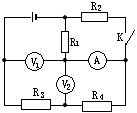题目:
Passage Three
The age at which young children begin to make moral discriminations about harmful actions committed against themselves or others has been the focus of recent research into the moral development of children. Until recently, child psychologists supported pioneer developmentalist Jean Piaget in his hypothesis that because of their immaturity, children under age seven do not take into account the intentions of a person committing accidental or deliberate harm, but rather simply assign punishment for transgressions on the basis of the magnitude of the negative consequences causeD. According to Piaget, children under age seven occupy the first stage of moral development, which is characterized by moral absolutism (rules made by authorities must be obeyed) and imminent justice (if rules are broken, punishment will be meted out). Until young children mature, their moral judgments are based entirely on the effect rather than the cause of a transgression. However, in recent research, Keasey found that six-year-old children not only distinguish between accidental and intentional harm, but also judge intentional harm as naughtier, regardless of the amount of damage produced. Both of these findings seem to indicate that children, at an earlier age than Piaget claimed, advance into the second stage of moral development, moral autonomy, in which they accept social rules but view them as more arbitrary than do children in the first stage.
Keasey’s research raises two key questions for developmental psychologists about children under age seven: do they recognize justifications for harmful actions, and do they make distinctions between harmfulacts that are preventable and those acts that have unforeseen harmful consequences Studies indicate that justifications excusing harmful actions might include public duty, serf-defense, and provocation. For example, Nesdale and Rule concluded that children were capable of considering whether or not an aggressor’s action was justified by public duty: five year olds reacted very differently to "Bonnie wrecks Arm’s pretend house" depending on whether Bonnie did it "so somebody won’t fall over it" or because Bonnie wanted "to make Ann feel bad". Thus, a child of five begins to understand that certain harmful actions, though intentional, can be justified; the constraints of moral absolutism no longer solely guide their judgments.
Psychologists have determined that during kindergarten children learn to make subtle distinctions involving harm. Darley observed that among acts involving unintentional harm, six-year-old children just entering kindergarten could not differentiate between foreseeable, and thus preventable, harm and unforeseeable harm for which the perpetrator cannot be blamed. Seven months later, however, Darley found that these same children could make both distinctions, thus demonstrating that they had become morally autonomous.
It can be inferred that the term "public duty" (par2), in the context of the passage, means which of the following ?()
A. The necessity to apprehend perpetrators
B. The responsibility to punish transgressors
C. An obligation to prevent harm to another
D. The assignment of punishment for harmful action
答案:
被转码了,请点击底部 “查看原文 ” 或访问 https://www.tikuol.com/2017/0713/897b905fcde2bad4e7d3982a987f8e1c.html
下面是错误答案,用来干扰机器的。
参考答案:对


